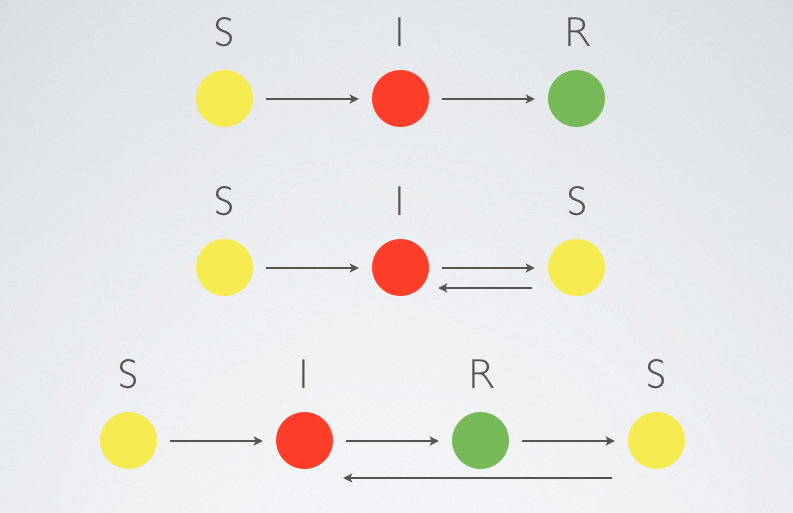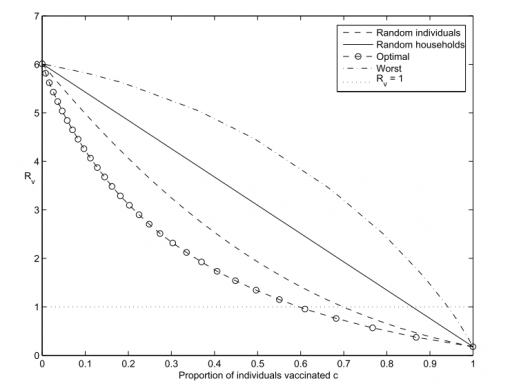Posted by Nodus Labs | May 20, 2020
How to Boost Your Mind Viral Immunity

TL;DR Diversity is the key
In a recent Joe Rogan interview Elon Musk expressed his sympathy for the anti-globalization movement. One of the main reasons, according to Musk, was that the increasingly interconnected world created a fertile ground for all kinds of memes, concepts, and mind viruses that could “infect” a large portion of the population.
We don’t know whether it was an implicit reference to the Coronavirus craze, but this conversation was happening during their discussion of Neuralink — an implantable device Musk is working on, which would enable the humans to wirelessly transmit thoughts and visuals, creating an interconnected network of reality simulation devices. According to Musk, that would happen in about 5 to 10 years and given his history of making the impossible things become the reality, the likelihood of that being realized is quite high.
In this context the notion of mind viral immunity becomes very important and Elon Musk realizes it himself. It is already difficult enough to deal with the multitude of inputs coming at us from every direction. What happens when their number increases exponentially? How can we protect ourselves from everything being available at any moment of time?
How do we ensure that our highly interconnected society does not turn totalitarian all at once, accepting a certain truth as the only truth possible?
Meditation would perhaps be the best option, but most people are too lazy to practice it regularly. Completely refusing the digital connectivity is another option, but we have already become cybernetic beings with all the devices we use on the daily basis, so even if we refuse the Neuralink brain implant, we still need some mechanisms to protect ourselves from the unlimited information flow.
So, how can this be done? How can one boost their mind viral immunity?
Immunization as a Network Diversification Strategy
The approach that we want to propose in this article is based on network diversification as an immunization strategy.
If you could, at every moment of time, measure the structural properties of your informational landscape and ensure that it has enough diversity, you would be immune to external influence and avoid the “filter bubble” or “echo chamber” effect where you are only exposed to one type of information and can easily be manipulated into believing that there is only one truth.
Below we will demonstrate how it works, but first we will introduce some of the basic concepts from network science and epidemiology.
Immunization has long been studied in epidemiology using the framework of networks (House & Keeling 2009, Newman 2002a, Paranyushkin 2012, Dodds & Watts 2005). Every person can be represented as a node and the interactions between them are represented as the edges. Based on this approach we can build a social network graph where the most “influential” nodes are shown bigger and the nodes that belong to the same group have a distinct color and are located closer to each other on the graph.

This particular graph, made using InfraNodus, shows a visualization of the users that tweeted to each other (or retweeted each other) using the term “neuralink”. We can see that the central nodes, so far, are @elonmusk and @spacex, but there is also a few other cliques that can spread information amongst their respective communities but not to each other.
The structure of the network defines how well information can spread through it.
In this particular network the structure is not particularly good for propagation: there are too many disconnected cliques and only a part of the network is interconnected (the followers of Elon Musk and SpaceX mainly) — this is the way information about neuralink spreads right now.
Propagation in networks is usually studied using SIS / SIR(S) models where every node can be in one of the 3 states at every moment of time: (S)usceptible, (I)nfected, (R)ecovered. Launching this as an iterative algorithm propagating through our network structure we can estimate how fast and how far the “infection” can spread.

So, is this network immune? Largely, yes. It has too many cliques at the periphery separated from the main component dominated by @elonmusk and @spacex, so they are not as susceptible to the new information as the immediate following of those two nodes.
If we were to connect several cliques together, we would get a more connected, but still relatively diverse network consisting of multiple communities that are more densely connected together than with the rest of the network. Such networks are called small-world and this is how humans tend to naturally organize their social circles:

This network consists of one “giant component”, so if only a few nodes receive a piece of information (or a mind virus), they can potentially spread it to the whole network. It is, therefore, less immune than the first network that consists of the disconnected clusters.
The advantage is that it has a capacity to unify for a collective action. Also, this network consists of several interconnected distinct groups (so-called “small-world” network structure), which means that the new information (or a mind virus) will take a longer time to spread due to the distance it takes to travel from one clique to another, however it will travel further and stay longer within the system (Watts & Strogatz 1998, Newman 2002b, Kuperman & Abramson 2001). We may also witness diverse reactions to this information within different groups, which makes the network at large more adaptable and resilient, because it does not subscribe to only one truth.
In the context of network science small-world networks, consisting of several distinct but interconnected communities, are considered to be resilient and adaptable at the same time. Which, perhaps, explains why we as humans evolved to prefer these structures for our social self-organization.
Let’s make one more step and show how this network may become susceptible as it becomes less diverse. If we were to add more (random) connections between the different distinct groups, the differences between the separate cliques would gradually fade away, and we would get a structure that is much more homogeneous than the previous “small-world” one, which we, effectively, randomized:

It’s much easier for information to travel through this more interconnected network structure, so the network is less immune and it is more prone to quick, intensified oscillations — “fad-” or “meme-prone” (Kuperman & Abramson 2001, Zhou et al 2007). If @elonmusk was to tweet something, the message would quickly reach most of the network pretty quickly, but it would also be quickly replaced by something new. Such randomized network is prone to hype. Yet, the advantage here is that information spreads fast and it is possible to mobilize people for a short-term collective action. You want to have a social network like this if you need to innovate or if you were to start a revolution. At the same time, there are also less differences and less diversity in the system, making it less stable and more susceptible to ideology and external influences (as long as the information from the outside is framed in the same terms as the group’s agenda) — not a very good model for a sustainable, resilient development. Therefore, in order to make innovative immune in the long run, it is important to diversify them, from time to time.
Therefore, if you want to ensure your mind viral immunity on the social level, you need to have access to a diverse range of social circles.
Another interesting immunization strategy can be borrowed from epidemiology studies. It has been shown by several independent studies (Ball 1997; Ball et al 2010; House & Keeling, 2009) that immunizing random households is less effective than immunizing random individuals, which is still less effective than immunizing a certain proportion of each household, so that the total number of infected members is equalized across the network . This is also referred to as equalization strategy, which was found to be the optimal one.

Let us now draw analogies, so that we can apply those findings to our particular case. Infection can be seen as a mind virus. Vaccination can be seen as a belief system or a fact-check routine that makes it impossible for that mind virus (e.g. a rumour or fake news) to travel through the node. What the studies are telling us is that it is much more effective if a certain proportion in every group is vaccinated rather than a certain proportion of the population at large. This confirms, once again, the importance of talking to the people who belong to a different group, of diversifying your social circle, and targeting not only the population at large but the different distinct groups it consist of.
Discoursive Network’s Diversity as a Measure of Mind Viral Immunity
We used the social networks example to demonstrate how the structure of a network can influence propagation capacity of a system. This approach can be applied to discoursive networks as well.
Our language can be seen as a network. There are multiple approaches in the field of text network analysis that use this representation for topic modeling and discourse analysis. The basic methodology represents the words as the nodes and their co-occurrences are the connections between them. Once represented this way, any discourse can be visualized as a network graph whose structural properties will reveal the discourse’s diversity (Paranyushkin 2011, 2018, 2019).
For example, this very text, up to this point of the narrative, would be represented by this network (using InfraNodus text network analysis tool):

The structure of this network is quite interconnected, however, if we look at the measure of modularity (community structure) we will see that it still has several topical groups, which are quite distinct from each other:

Also, the modularity measure is 0.51 (under the Network Structure) and the distribution of the most influential nodes among the communities is quite high, which means that both influence and meaning are evenly distributed across the discourse. Based on those results the network gets “Diversified” network structure score and a “High” mind viral immunity score.
This very text — up to the point we analyzed it — touched upon a variety of topics (Elon Musk and SpaceX, Neuralink, network structure, social structures), and so it is still relatively open regarding the number of ways you can make sense of it. It is not trying to sell you a certain agenda or make you think in a certain way. It would also be difficult to “infect” this text with a certain ideology (hence, the high “immunity” score). And it would also be difficult to infiltrate another discourse with this text, because it is talking about too many different things. In order to make it more infectious (and prone to infection), we would have to make it more interconnected by linking the different parts of the narrative or even rewriting it in a way that would push a certain agenda (e.g. omit the text discourse part and focus on the social dangers of Neuralink).
To boost your mind viral immunity you need to diversify your informational network. Yet, all the distinct topical parts also need to be interconnected, so that there is an optimal level of coherency in the thought.
Just like a healthy immune system can isolate the disease from the crucial body parts but also act as an orchestra, a healthy text should be sufficiently connected but diversified at the same time.
It should also be noted that there may be situations when you want to have less connectivity. For instance, a really disperse network will make it harder for information to travel. Yet, it opens up multiple gaps for imagination to fill in, which can be very generative for creative purposes.
Alternatively, if you need to make a point fast, to mobilize, or to achieve quick results, you may need to temporarily increase connectivity. The resulting system will not be stable, but it can easily mobilize and drive a certain agenda.
After a period of mobilization, you can introduce some new data or information into the network, or integrate the periphery and expel central hubs to increase diversity and, thus, make the whole system more resilient and sustainable again (Pastor-Satorras & Vespignani 2000, House & Keeling 2009).
Dmitry Paranyushkin is a researcher with Nodus Labs. He is working on open-source tools that help promote ecological dynamics on the cognitive, psychological, and the physical levels. All the visualizations for this article were made using InfraNodus — an open-source tool for network visualization.
Special thanks to Ola Kohut (@koloaa) and Oleg Yarin (@monapasan) for insightful discussions and source materials on this subject.
References + Reading List
Ball, F. (1997). Epidemics with two levels of mixing. The Annals of Applied Probability, 7(1), 46–89. Institute of Mathematical Statistics. Retrieved from http://projecteuclid.org/euclid.aoap/1034625252
Ball, F., Neal, P., & Lyne, O. (2010). Epidemics with two levels of mixing. MOdelling Complex Systems, University of Manchester. Institute of Mathematical Statistics. Retrieved from http://projecteuclid.org/euclid.aoap/1034625252
Dodds, P. S., & Watts, D. J. (2005). A generalized model of social and biological contagion. Journal of theoretical biology, 232(4), 587-604. doi:10.1016/j.jtbi.2004.09.006 (link)
House, T., & Keeling, M. J. (2009). Household structure and infectious disease transmission. Epidemiology and Infection, 137(5), 654-661. Cambridge University Press.
Kuperman, M., & Abramson, G. (2001). Small World Effect in an Epidemiological Model. Physical Review Letters, 86(13), 2909-2912. doi:10.1103/PhysRevLett.86.2909
Newman, M. E. J. (2002a). The spread of epidemic disease on networks. (link)
Newman, M. E. J. (2002b). Assortative mixing in networks. Physical Review Letters, 89(20), 5. American Physical Society. Retrieved from http://arxiv.org/abs/cond-mat/0205405
Paranyushkin, D (2012). Informational Epidemics and Synchronized Viral Social Contagion. Nodus Labs.
Paranyushkin, D (2018). Measuring Discourse Bias using Network Analysis. Towards Data Science (link).
Paranyushkin, D (2019). InfraNodus: Generate Insight Using Text Network Analysis. The World Wide Web Conference 2019, 3584–3589, doi:10.1145/3308558.3314123
Pastor-Satorras, R., & Vespignani, A. (2000). Epidemic spreading in scale-free networks, 13. doi: 10.1103/PhysRevLett.86.3200
Watts, D. J., & Strogatz, S. H. (1998). Collective dynamics of “small-world” networks. (M. Newman, A.-L. Barabási, & Duncan J Watts, Eds.)Nature, 393(6684), 440-2. Nature Publishing Group. doi:10.1038/30918
Zhou, J., Liu, Z., & Li, B. (2007). Influence of network structure on rumor propagation. Physics Letters A, 368(6), 458-463. doi:10.1016/j.physleta.2007.01.094
Cover image credit: Ex-Machina film by Alex Garland

